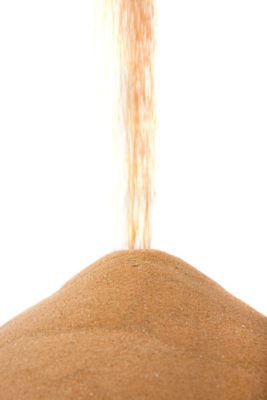Our Ecologic™ Mortar uses a sharp well graded proprietary blend, so it’s not just ANY sand!
The dictionary definition of Sand: weathered particles of rocks, usually high in silica, smaller than gravels and larger than silts, typically between about 0.06 mm to 5 mm. The particles are hard and will not crumble. Sand is used as an aggregate in mortars, plasters and renders as well as a component in concretes. The properties of sand used in a mix have a major effect on its workability, final strength and durability.
The types of sand normally used in building are:
- Sharp sand: consists of predominantly sharp angular grains. Clean well graded sharp sand for mortar, render and plaster is selected as the best for the strength and durability it imparts to the finished work. Workability is improved by mixing with fat lime as the binder and allowing this to stand as coarse stuff (not possible with OPC as a binder on its own).
- Coarse sand: A sand which is composed of predominantly large and medium sized grains. The higher the proportion of large grains, then the coarser the sand. Coarse sand is used for external renders and mortars to improve durability. Very coarse sands usually require a lime binder, blending with other sands or the addition of a plasticizer to assist workability. Sharp coarse sand is the most durable but the least workable, although suitable for roughcast.
- Soft sand: A sand which is composed of predominantly small and rounded grains. It often has a set content, the proportion of which is variable. It feels soft in the hand when squeezed. The smallest rounded particles assist workability but can give rise to cracking and failure in the finished work.
- Well-graded sand: A sand with an approximately even particle size distribution. As the smaller particles may fit in between the larger particles, this even distribution reduces the proportion of voids to solids and thus is less demanding on the binder than poorly-graded sand.
- Blended sand: A blend of sands of different grain sizes and sharpness to achieve a good particle size distribution. This provides a balance between durability and workability. Used mostly in connection with plaster for backing coats and pointing mortar when the quality of available sand needs to be improved. Sand may be blended by sieving it to adjust the particle size proportions, or by using sands from different sources.
Taken from Ecole d’Avignon/Re’seau Art Nouveau
Click here to read more about the ‘right’ sand for your mortar project.

Presented by LimeWorks.us
Phone: 215-536-6706























